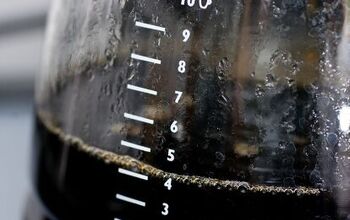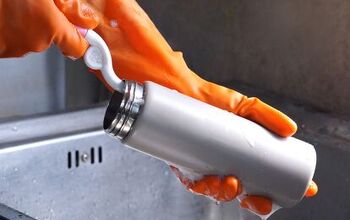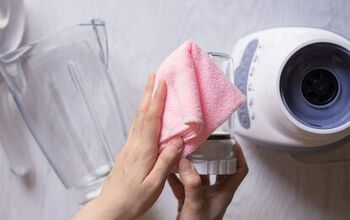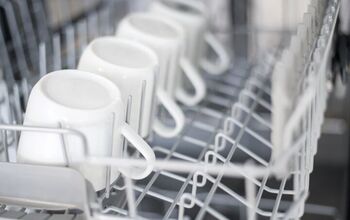Are Coffee Pots Dishwasher Safe? (Find Out Now!)

If you’re anything like me, your coffee pot is one of the most important and utilized appliances in your home. With such busy schedules, we rely on the coffee that they brew to wake us up in the morning and keep us motivated throughout the day. Though, like all other kitchen appliances, they too need to be cleaned on a regular basis.
Cleaning your coffee pot after each use ensures that you always enjoy the best-tasting coffee. So, for the sake of convenience, you may be wondering: “Are coffee pots dishwasher safe?” Whether or not a coffee pot is dishwasher safe typically depends on the material it is made out of. That said, most glass and stainless steel coffee pots are top-rack dishwasher safe, while plastic coffee pots are usually not.
However, there is much more to cleaning coffee pots than whether or not they are dishwasher safe. Keeping your coffee pot clean is no more difficult than any other appliance, but having a variety of tips and tricks under your belt can make the process even easier. So, if you’re wondering what the best way is to clean your coffee pot, keep reading.
Do You Need a Maid Service?
Get free, zero-commitment quotes from pro contractors near you.

How to Clean Your Coffee Pot
Fortunately, cleaning your coffee maker is not a difficult process. It only takes a minute of your time every day, and then about five minutes of more hands-on work each month, or so. Staying on top of cleaning your coffee pot will ensure that you have the best tasting coffee and no bacteria is getting into your brew.
After Each Use
If you use your coffee maker on a daily basis, it’s important that you clean your coffee pot on a daily basis. Bacteria love warm, damp environments, which makes your coffee pot the ideal place for it to start growing. To clean your coffee maker after each use, you first want to allow it to cool down. The water that filters through your coffee maker is incredibly hot and you could burn yourself from the steam.
Plus, some coffee pots are made of glass. If you remove the carafe immediately and pour in cooler water, this may cause the glass to shatter. Instead, stay safe by shutting off your coffee maker and allowing at least 30 minutes for it to cool down before you start cleaning.
At this point, if your coffee pot is dishwasher safe, you can run it through a cycle on the top rack. If it’s not dishwasher safe, or you’re not sure, use a soft sponge and warm, soapy water to thoroughly clean the coffee pot. After you’re done, rinse well and dry immediately to prevent water spots.
Quick Tip: If you do choose to wash your coffee pot in the dishwasher, I advise that you pull it out before the drying cycle. Dishwashers are notorious for leaving water spots. Pulling them out early and giving them an extra rinse and hand-towel dry will prevent water spots form forming entirely.
Deep Cleaning Methods
Aside from cleaning your coffee pot on a daily basis, you also want to give it a good deep clean once a month to ensure that the carafe stays streak- and stain-free. There are a number of methods and cleaners that you can use, including:
1. White Vinegar
White vinegar works wonderfully as a stand-alone sanitizer and stain lifter. It’s also great for those who want to deep clean both their coffee pot and coffee maker at the same time. All you need is white vinegar and water. Pour equal parts of each into your coffee pot so that it’s full. Then, pour a similar mixture of vinegar and water into the reservoir of your coffee maker and run a cycle without any coffee.
This method will remove any unpleasant odors and build-up in your coffee maker, while also cleaning your coffee pot. Let the vinegar and water solution soak in your coffee pot for several minutes, then rinse both the pot and the machine by running several cycles with just plain water.
2. Vinegar and Baking Soda
Both vinegar and baking soda are effective natural cleaners for virtually any surface, while baking soda is particularly efficient at lifting coffee stains out of coffee pots and mugs. To deep clean your coffee pot with vinegar and baking soda, mix together equal parts baking soda and water until you reach a thick, paste-like consistency. Scrub the paste into the stains in and around the carafe.
If the stains are light enough, the baking soda alone may be sufficient. For more stubborn stains, pour vinegar in the coffee pot to cover up the baking soda and stir the mixture. The chemical reaction this creates will remove any remaining stains.
3. Lemon Juice and Salt
This coffee pot deep cleaning method combines lemon juice, salt, and ice – three materials that you likely already have in your kitchen. Start by adding about three tablespoons of coarse salt all around the inside of your coffee pot, focusing on stained spots. Then, pour the juice of one lemon (or about two tablespoons of lemon juice) and 1 cup of crushed ice into the pot.
Once everything is in the coffee pot, give the mixture a stir. The ice and salt will help scrub away stains, while the acidity of the lemon will help lift them. If necessary, use a sponge to scrub at stubborn stains. Finally, rinse with cold water.
4. Denture Tablets
For this method, simply fill your coffee pot up with warm and add in two anti-bacterial denture tablets. Wait about 15 minutes for the tablets to do their work, then thoroughly rinse and scrub any remaining stains with dish soap.
Do You Need a Maid Service?
Get free, zero-commitment quotes from pro contractors near you.

5. Dishwashing Detergent
If you have the time to let it soak, dishwashing detergent works great for removing stains in coffee pots. Add a small amount of dishwashing liquid (about a tablespoon) to the pot, and fill with boiling water. Let the mixture sit overnight and then use a sponge or scrub brush to remove any leftover stains the following morning.
6. Coffee Cleaner
Oftentimes, the best way to deep clean a coffee pot is to use the commercial strength of coffee cleaner. For this method, make sure that you explicitly follow the manufacturer’s instructions that come on the cleaner. Some types may require you to run a cycle with the cleaner, while others will have you scrub or soak the stains.

Jessica considers herself a home improvement and design enthusiast. She grew up surrounded by constant home improvement projects and owes most of what she knows to helping her dad renovate her childhood home. Being a Los Angeles resident, Jessica spends a lot of her time looking for her next DIY project and sharing her love for home design.
More by Jessica Stone



























